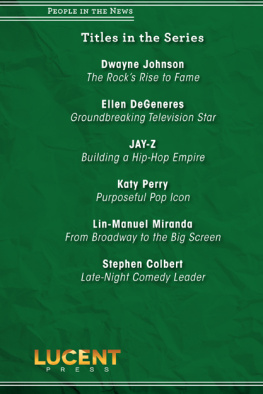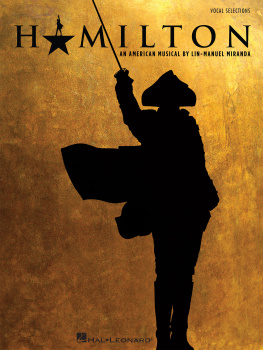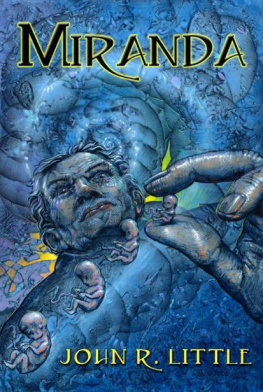CREATING CARMEN MIRANDA

CreatingCARMEN MIRANDA
Race, Camp, and Transnational Stardom
Kathryn Bishop-Sanchez
Vanderbilt University Press
Nashville
2016 by Vanderbilt University Press
Nashville, Tennessee 37235
All rights reserved
First printing 2016
This book is printed on acid-free paper.
Manufactured in the United States of America
Library of Congress Cataloging-in-Publication Data on file
LC control number 2015042857
LC classification number ML420.M53 S26 2016
Dewey class number 782.42164092dc23
ISBN 978-0-8265-2112-5 (cloth)
ISBN 978-0-8265-2114-9 (ebook)
In memory of my sister Yvette
CONTENTS
ILLUSTRATIONS
ACKNOWLEDGMENTS
When the topic of your research is a flamboyant and well-known star like Carmen Miranda, you inevitably have conversations with a lot of people from all walks of life, many of whom may have interesting ideas they are willing to share, often in the most random circumstances. Over the past ten yearsmy sons entire life, as he is prompt to remind meI have been privileged to innumerable impromptu and informal conversations, and I am grateful to everyone who took the time to weigh in on Carmen Mirandas stardom.
The writing of this book has been immensely facilitated by the generosity and assistance of family, friends, colleagues, institutions, and librarian professionals.
I owe a great debt of gratitude to the staff of several archives for their expertise, pertinent advice, and patience. In the Los Angeles area, I was fortunate to spend several months at the fabulous Margaret Herrick Library and benefited from the assistance of its knowledgeable staff, in particular Barbara Hall, Kristine Krueger, Sandra Archer, Stacey Enders, and my dear friend Lea Whittington. At the University of California, Los Angeles, I am grateful to Mark Gens at the Film and Television Archive, Lauren Buisson at the Department of Special Collections, and my dear colleague, Brazilianist, and film expert Randal Johnson. At the library of the University of Southern California, Ned Comstocks assistance was extremely useful. I wholeheartedly thank David Miller at the Twentieth Century-Fox legal department for allowing me to work with the Carmen Miranda files at Fox.
I was fortunate to have access to collections at the New York Public Library in the Performing Arts, the Manuscripts and Archives Division, and the Schomberg Center for Research in Black Culture. Mark Evan Swartz and Maryann Chach made my time at the Shubert Archive both productive and enjoyable, and I thank them for their insights and our many long conversations that greatly enriched my understanding of Mirandas Broadway years.
In Brazil, I am grateful to have worked in the archives of FUNARTE-Rio de Janeiro, the National Library, the National Archives, and the Museum of Images and Sound (MIS). My warmest thanks to Cesar Soares Balbi, the director of the Carmen Miranda Museum, for opening its archive and many hidden treasures; his knowledge of Carmen Miranda is most humbling. At the filmothque and archives of the Museum of Modern Art, I am especially thankful for the kindness and expertise of Hernani Heffner, who always took time to assist me. I am equally grateful to Alice Gonzaga, Adhemar Gonzagas daughter, for graciously welcoming me in the Cindia Studio Archive. Enormous thanks are due Ruy Castro, who has not only written the most superb biography of Carmen Miranda, but is also generous with his knowledge and time, and although our schedules did not correspond and allow us to meet in person, he was gracious to promptly respond to my emails.
This project also received significant institutional support from the University of Wisconsin, Madison. The Graduate School for Research in the Humanities provided much appreciated summer support and research funds over several years. I was awarded time off from teaching to concentrate on writing the manuscript at different points of this project through a sabbatical, a semester leave through a Feminist Scholarship Award from the Center for Research on Gender and Women, and a Race, Ethnicity, and Indigeneity Fellowship at the Institute for Research in the Humanities (IRH). I would like to thank my cohort of fellows at the IRH during the academic year 20102011, who greatly enriched my thought process, in particular Jimmy Casas Klausen, Rob Nixon, Mary Lou Roberts, Aliko Songolo, Rachel Brenner, Teju Olaniyan, and (despite being on sabbatical) Susan S. Friedman for her vote of confidence.
Over the years, this project has benefited from the friendly, critical eye of colleagues and mentors at the University of Wisconsin, Madison, whose example and camaraderie I continue to value. I am particularly grateful to my colleagues Alicia Cerezo Paredes, Ellen Sapega, Fernando Tejedo, Glen Close, Ivy Corfis, Juan Egea, Kata Beilin, Ksenija Bilbija, Lus Madureira, Sarli Mercado, Steve Stern, and the late Ray Harris. Infinite thanks to my dearest friend and colleague Severino Albuquerque, whose encouragement, humor, and excellent suggestions over many late dinners proved priceless over the course of these years.
Thanks are due as well to many wonderful colleagues in the dynamic field of Brazilian studies. For their theoretical insights, keen interest, and tolerance in collectively listening to close to two dozen papers on Carmen Miranda, inviting me to give a talk, participating in conferences and panels, and sharing essential bibliographic references, I especially acknowledge my gratitude to Ana Lpez, Ana Paula Ferreira, Anna Klobucka, Anna More, Camilo Gomides, Charles Perrone, Claire Williams, Drio Borim, Darlene Sadlier, David Frier, David Jackson, Emanuelle Oliveira-Monte, Fernando Luiz Lara, Fernando Rocha, Hilary Owen, Ins Dias, Jeremy Lehnen, Jim Green, Leila Lehnen, Luca Bacchini, Lcia S, Luiz Fernando Valente, Marc Herzman, Maria Jos Barbosa, Paulo de Medeiros, Pedro Meira Monteiro, Peggy Sharpe, Rebecca Atencio, Rex Nielson, Robert Simon, Steven Butterman, and Victor Mendes.
The book has been much improved by the suggestions and corrections made by Bryan McCann and Christopher Dunn. Chris was also very generous with his time while in residence in Madison, and I appreciate our friendship and his willingness to share his vast knowledge of Brazilian music and culture, along with his New Orleans culinary talents. I am grateful to Antnio Carlos Secchin for finding and generously sending to me the absolutely priceless and long-out-of-print Cssio Emmanuel Barsante Carmen Miranda book. I am also extremely grateful to Carlos Reis for his kind support of a project that was clearly not his cup of tea at first, but for which he generously provided narratological insights and theoretical references, especially during the beginning and completion of this process.
I would like to thank my students at the University of Wisconsin, Madison, who enabled me to rehearse my obsessions in courses on Brazilian culture, race, gender, and film and who frequently contributed brilliant points of view about these topics. Among these students and future colleagues, a special thanks to Djurdja Trajkovic, Israel Pechstein, Jaime Rhemrev, Juan Iso, Robin Peery, and Valerie Klorman. I am also grateful to my undergraduate research assistants, Elizabeth Toussaint, who worked with the Getlio Vargas diaries, Sarah Kenney, for her work on memorabilia and newspaper film reviews, and Courtney Cottrell, who worked with fashion and magazines.












